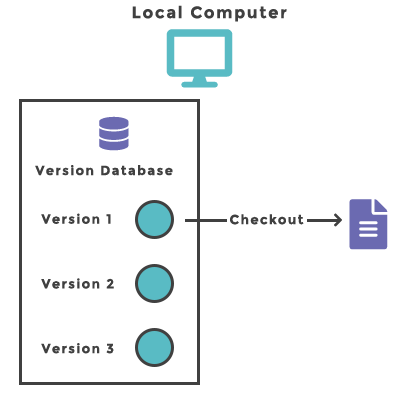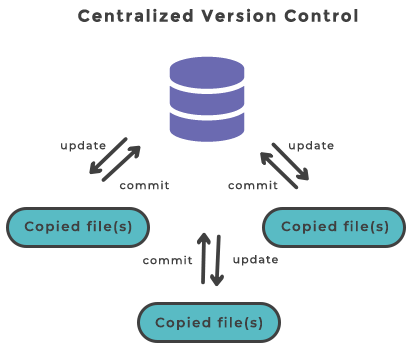
Version Control
Definition
Version control is a system that allows the software team to manage changes to the source code over time. This software tool makes it easier for developers to collaborate on different projects separating their tasks through branches. It also gives the possibility to turn back to earlier versions for comparing and fixing the mistakes if needed.
Importance
The points mentioned above are especially important for developer-oriented work, as it enables multiple developers or teams to work separately without having an impact on the work of others. It helps to build, test and integrate features in a tractable manner.
Version Control Systems
Definition
Version Control Systems (VCS) also known as SCM (Source Code Management) or RCS (Revision Control System) are software tools for keeping track of changes to the source code over time.
Types of Version Control Systems
Generally, there are three types of version control systems software teams choose. They are:
Local Version Control Systems
Local VCSs were created to prevent issues such as confusing the directories and accidentally writing or copying to the wrong file. It is a simple database that keeps all the changes to files under revision control. One of the most popular VCS tools was a system called Revision Control System (RCS), which is still distributed today, although being an earlier version control system. It allows users to make their revisions of a document, commit changes, and merge them. RCS was originally developed for programs but is also useful for text documents or configuration files that are frequently revised.

Centralized Version Control Systems
In centralized systems, all the versioned files, as well as a number of clients that check out files from that central place, are included in a single server. For many years, this has been the standard for version control. Centralized Version Control Systems are CVS, Subversion, and Perforce.
Distributed Version Control Systems
In Distributed Version Control Systems (DVCS), clients fully mirror the repository, including its full history. If the server that these systems were collaborating with dies, the client repositories can be copied back up to the server to restore it. Distributed Version Control Systems are Git, Mercurial, Bazaar or Darcs.
Benefits of Version Control Systems
The primary benefits of Version Control Systems are the following:
-
Long-term change history
The changes made by developers, including the creating, modification, and deletion of files over the years, can be seen in history. It will allow going back to the previous version for analyzing bugs and fixing problems.
-
Branching and merging
Branching helps work in an independent manner and not interfere with each other’s work. Merging brings the works together and allows seeing if there are conflicts between those works.
-
Traceability
Ability to trace each change and connect it to project management and bug tracking software, as well as to annotate each change with a message describing the purpose of the change.
Practice Your Knowledge
Quiz Time: Test Your Skills!
Ready to challenge what you've learned? Dive into our interactive quizzes for a deeper understanding and a fun way to reinforce your knowledge.